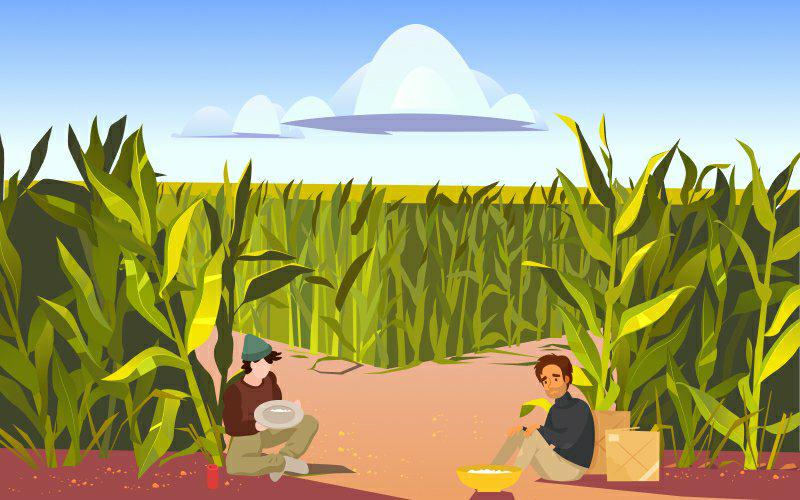Agriculture in India: The Real Picture

This post has been authored by Deepanjali Nandi, Research Analyst Interns at Arthashastra Intelligence
India, with a population of 1.4 billion, is the second-most populous country in the world. Agriculture is one of the key sectors of the economy, providing employment to over 60% of the population and contributing about 18% of India’s GDP.
The above graph shows that the Gross Value Added (GVA) by agriculture, forestry, and fishing has declined over the years. With the outbreak of the COVID-19 pandemic in 2020, the GVA of the sector declined in Q2:2021 and Q3:2020 but then showed an upward trend. Further, the GVA declined in Q3:2021.
The major problems that are faced by the agriculture sector today are as follows:
Fragmented land holding
The apparent abundance of net sown area of 140.02 million hectares and total cropped area of 192.20 million hectares (2009-10) becomes insignificant when we consider that it is fragmented into economically unviable small and scattered holdings.
In 1995-96, the average size of a holding was 1.50 hectares that decreased to 1.08 hectares in 2015-16. With the limitless subdivision of land holdings, the size of the holdings can shrink even further.
Irrigation problems
- Poor farmers cannot afford the increasing cost of irrigation and expensive micro-irrigation facilities.
- The use of irrigation has led to the problem of water logging and salinity, which has affected around 3.30 million hectares of land.
- There are huge regional disparities in irrigation development.
- The decline in the water table has been caused by overexploitation of ground water and insufficient recharge from rainwater.
- Suboptimal use of irrigation facilities by the farmer.
Manures and Fertilisers
Though chemical fertilisers increase crop production, their overuse has hardened the soil, decreased fertility, soil acidification or basification, and polluted the air and water. Due to these problems, there is a need to promote the use of alternative fertilisers such as nano urea and organic fertilisers like manures, which protect the soil, are more productive and contribute to higher nutrient use efficiency.
Lack of mechanization and technology
Mechanization is a crucial element in agricultural production. In India, the overall level of farm mechanisation is 40–45 percent, and small and marginal farmers use few or no machines for plowing, sowing seeds, irrigating and pruning, weeding, harvesting and transporting crops, resulting in massive human labour waste and low crop yields per capita labour force. There is a need to improve the productivity of small and marginal farmers through the development, training, and implementation of small-holding farm technologies.
Lack of good quality seeds
Seeds are the basic input for crop production. But there is an unavailability of good quality crops and if available, they are so expensive that farmers cannot afford them, which leads the farmers to use the traditional seeds, which are less productive.
Agricultural Marketing
Agriculture marketing includes the buying and selling of agricultural produce. Some of the major problems faced by farmers today for agricultural marketing are listed as follows:
- Dominance of intermediaries.
- Lack of organised market and unfavourable mandi system.
- Lack of market understanding of farmers.
- Lack of grading and standardization.
- Lack of Institutional finance.
- Lack of proper storage facilities and transport facilities.
Lack of investment and credit
There is a direct correlation between capital investments in agriculture and its growth rate. But public investment in the sector is 2-3 percent, and that of the private sector is also 2-3 percent. There is also a huge problem of inadequacy of credit, high interest rates, and neglect of small and marginal farmers. Therefore, there should be greater access to concessional institutional credit for farmers, greater participation of the private corporate sector, and increased public investment.
The above discussion provides us with an insight that most farmers\’ conditions are terrible. About 80% of farmers in India are marginal or small farmers. Crop diversification into oilseeds, pulses, and horticulture must be prioritised, with the key challenges of irrigation, investment, financing, and markets addressed. While the government has adopted MSP as a signal to stimulate crop diversification, state governments must also help support the transition to high-value, low-water-use crops in order to achieve the goal of doubling farmers\’ income in a sustainable manner.
References:
